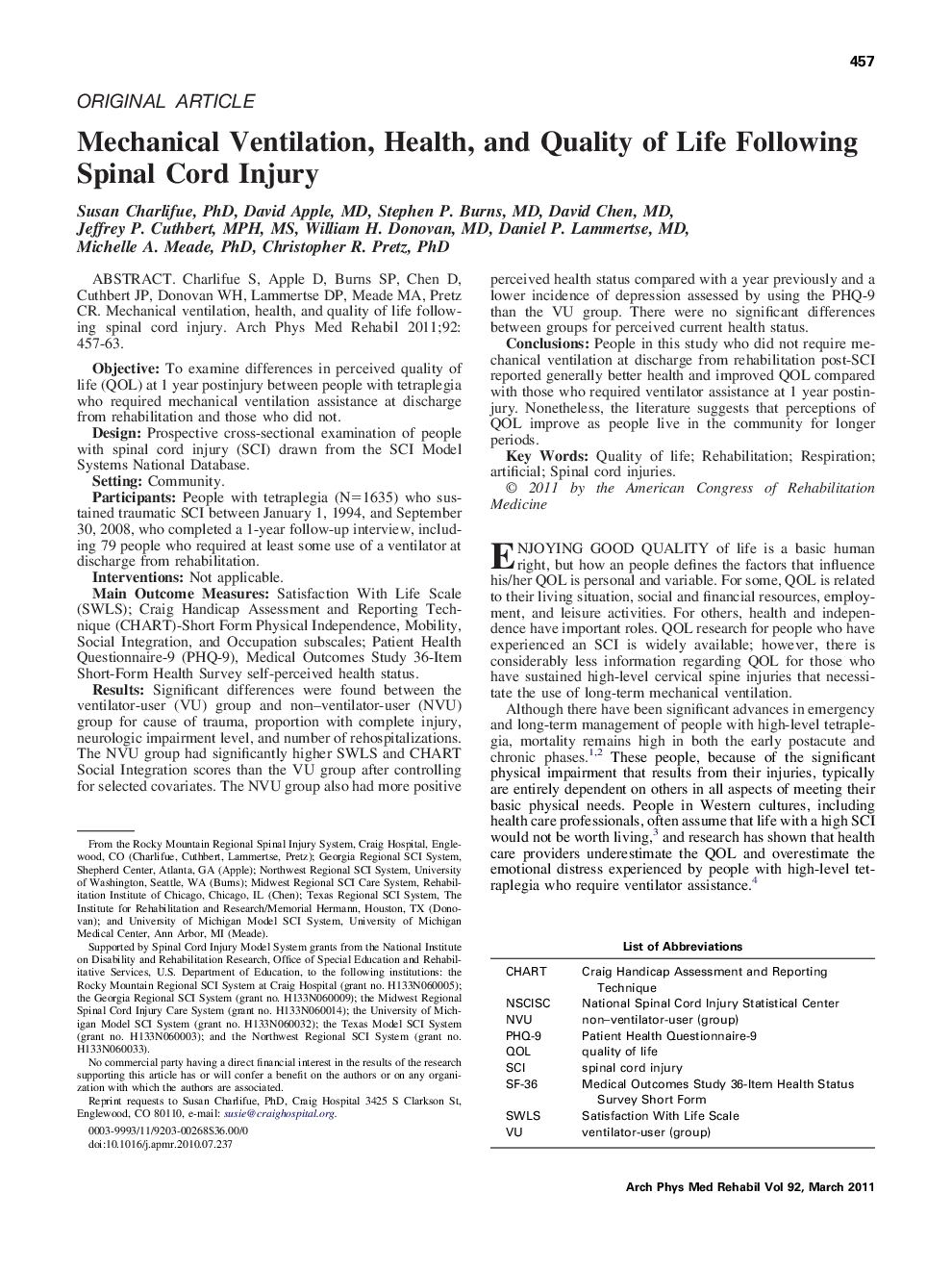| کد مقاله | کد نشریه | سال انتشار | مقاله انگلیسی | نسخه تمام متن |
|---|---|---|---|---|
| 3450290 | 1595742 | 2011 | 7 صفحه PDF | دانلود رایگان |

Charlifue S, Apple D, Burns SP, Chen D, Cuthbert JP, Donovan WH, Lammertse DP, Meade MA, Pretz CR. Mechanical ventilation, health, and quality of life following spinal cord injury.ObjectiveTo examine differences in perceived quality of life (QOL) at 1 year postinjury between people with tetraplegia who required mechanical ventilation assistance at discharge from rehabilitation and those who did not.DesignProspective cross-sectional examination of people with spinal cord injury (SCI) drawn from the SCI Model Systems National Database.SettingCommunity.ParticipantsPeople with tetraplegia (N=1635) who sustained traumatic SCI between January 1, 1994, and September 30, 2008, who completed a 1-year follow-up interview, including 79 people who required at least some use of a ventilator at discharge from rehabilitation.InterventionsNot applicable.Main Outcome MeasuresSatisfaction With Life Scale (SWLS); Craig Handicap Assessment and Reporting Technique (CHART)-Short Form Physical Independence, Mobility, Social Integration, and Occupation subscales; Patient Health Questionnaire-9 (PHQ-9), Medical Outcomes Study 36-Item Short-Form Health Survey self-perceived health status.ResultsSignificant differences were found between the ventilator-user (VU) group and non–ventilator-user (NVU) group for cause of trauma, proportion with complete injury, neurologic impairment level, and number of rehospitalizations. The NVU group had significantly higher SWLS and CHART Social Integration scores than the VU group after controlling for selected covariates. The NVU group also had more positive perceived health status compared with a year previously and a lower incidence of depression assessed by using the PHQ-9 than the VU group. There were no significant differences between groups for perceived current health status.ConclusionsPeople in this study who did not require mechanical ventilation at discharge from rehabilitation post-SCI reported generally better health and improved QOL compared with those who required ventilator assistance at 1 year postinjury. Nonetheless, the literature suggests that perceptions of QOL improve as people live in the community for longer periods.
Journal: Archives of Physical Medicine and Rehabilitation - Volume 92, Issue 3, March 2011, Pages 457–463